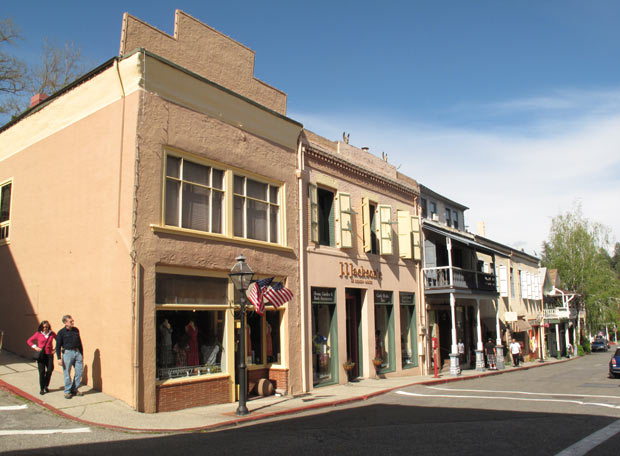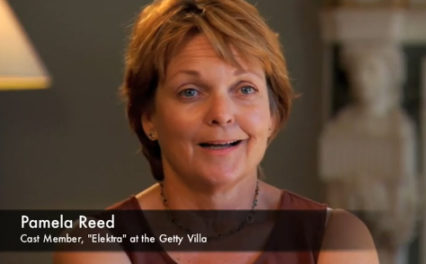
When I talk about the importance of sustainability and cultural heritage, most people nod their heads—we’ve all heard the word “sustainable” in terms of the green revolution—but then a second later they usually ask, “Wait, what exactly do you mean?”
Sustainable development—meeting the world’s current needs by using what we already have, so that we’re not compromising the resources of future generations—has important implications for our environmental, economic, and social well-being.
The good news is that most cultural heritage professionals, working to conserve buildings, ancient living sites, and the historic places that touch our hearts, do keenly recognize the significant relationship between conservation and sustainability.
Heritage conservation has demonstrated the significant role it plays in sustaining local communities: not only reinforcing local identity, traditions, and practices, but also bringing economic benefits through well-managed tourism.
One local California example is the town of Nevada City in California’s Sierra foothills, which was facing a fiscal crisis in the late 1960s. Many of the town’s fascinating Gold Rush-era buildings, streets, and other structures were in danger of being lost to new construction. Instead of razing these historic buildings, the city, working with heritage professionals, decided to capitalize on its legacy to create new business opportunities that sustain its local communities socially, economically, and environmentally. Today, Nevada City’s historic district is thriving.

Sustainably conserved: a Gold Rush-era building in Nevada City, California
Unfortunately, the important role that heritage conservation can play in meeting the aims of environmental sustainability hasn’t yet been well recognized. In some cases, this has led to unnecessary conflicts between heritage conservation efforts and environmental concerns.
For instance, how do you retrofit to improve energy efficiency in historic buildings without causing harm to their character and appearance? How do you adapt a historic building for new uses that may require things like very specific climate control? Maintaining the integrity of sites and bringing them up to code is just one of many challenges in dealing with historic structures.
And what about museums—how can they employ new methods for energy conservation while still preventing the deterioration of the important objects in their care?
These are all interesting questions, and experts are still debating solutions.
If you’d like to join in this ongoing conversation, this coming Tuesday, January 11, 2011, Susan Macdonald, head of field projects for the Getty Conservation Institute and former head of the NSW Heritage Office in Australia, will lead a panel of experts in a discussion of climate change, sustainable development, and negotiating the future of heritage conservation.
In addition to Macdonald, panelists will include notables such as Jean Carroon, an architect and the principal for preservation at Boston design firm Goody Clancy. Carroon is nationally recognized for her achievements in sustainable design for historic buildings. Also on the panel will be Jerry Podany, senior conservator of antiquities at the J. Paul Getty Museum and president-elect of the International Institute for Conservation, and Chris Wood, head of the building conservation and research team at English Heritage, where he specializes in dealing with problems caused by deteriorating materials on historic structures. Get more information and make a reservation here.
The Getty Conservation Institute (GCI) holds these kinds of panels on interesting conservation topics a few times a year as a public service. Admission is free.
The GCI also will host a lecture on April 14 with Roberto Nardi, Kress Lecturer at the Archeological Institute of America for 2010/2011. Nardi will talk about the conservation of mosaics in the Monastery of Saint Catherine in Sinai, which was featured in the groundbreaking 2006 exhibition Holy Image, Hallowed Ground: Icons from Sinai.
Stay tuned for other free opportunities to hear about some of the work the GCI is doing around the world, or explore some of their projects on the GCI’s website.




Hello!
Great article! I think you raise some very pertinent questions yet to be answered in this field. There is a very complex interplay between preservation and development, and I don’t necessarily think they should be divorced from one another. Historic properties and stories can be integrated into visions of the future, too! I hope you were able to film/record/document the panel discussion– I’m very interested to see how the panelists addressed the issues of historic preservation, sustainable development, and cultural heritage advocacy. Please let me know!
Also, I wrote a short piece on Culture in Peril about your post and some of the ideas you present. Here is a link: http://cultureinperil.blogspot.com/2011/01/adaptive-reuse-and-cultural-heritage.html
All the best,
Nicholas Merkelson
Culture in Peril
http://www.cultureinperil.com
Twitter @cultureinperil
Hi, Nicholas.
Thanks for your comment and post! We did indeed document the panel discussion, and it will be available for viewing on the Getty Conservation Institute website after February 1.
Best,
Melissa